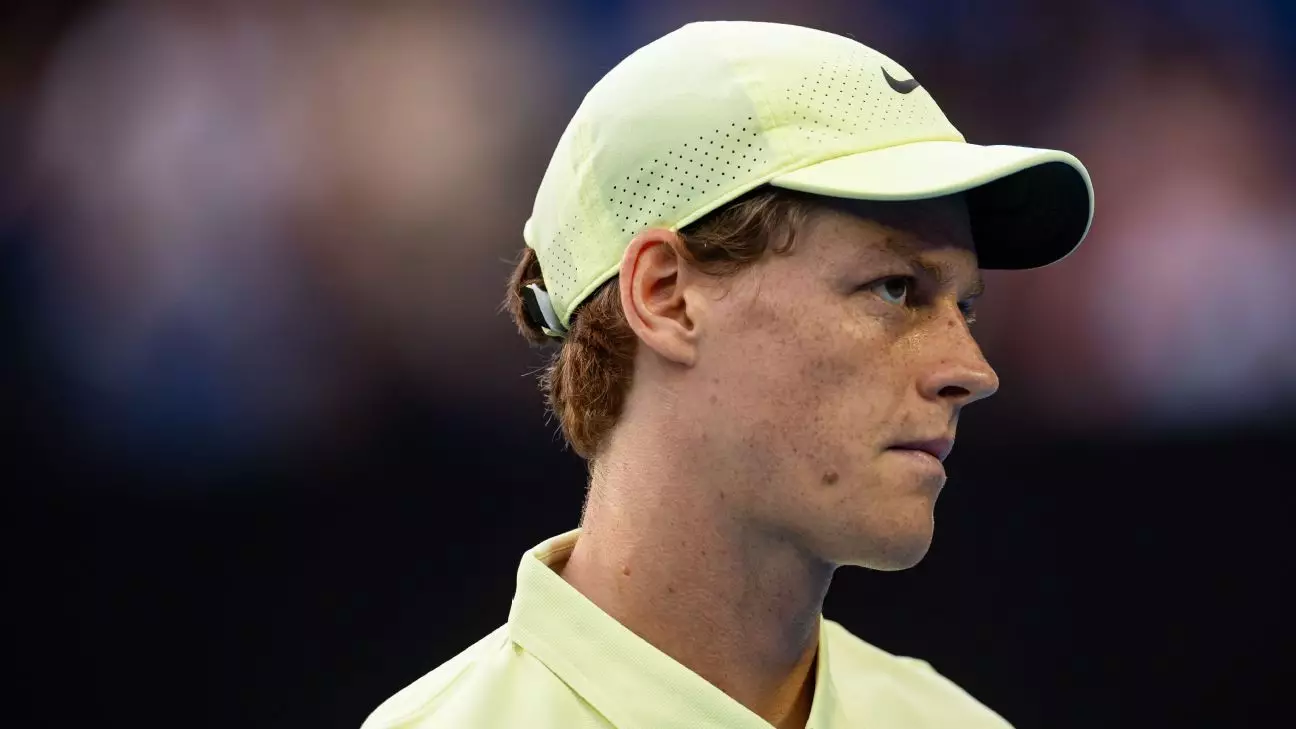The recent announcement of Jannik Sinner’s return to professional tennis after a three-month doping ban has reignited conversations surrounding athlete integrity and the pressures of modern sports. Sinner, once a rising star on the ATP Tour, found himself amidst controversy when a ban issued by the World Anti-Doping Agency (WADA) raised eyebrows due to its timing and circumstances. With his comeback kicking off at the Italian Open, a tournament often viewed as a crucial milestone for players, the young Italian has encountered both unexpected support and glaring silence from peers – a reflection of the tension in the professional sports landscape.
This dichotomy of support is fascinating; Sinner expressed surprise at receiving encouragement from some players while feeling abandoned by others he expected to reach out, highlighting the tightly-knit but fractious nature of the tennis community. His reluctance to name those who either supported him or stood by in silence hints at an unspoken code of conduct among athletes, where the stakes of sympathy and reputation often outweigh the straightforward act of reaching out.
Context of the Controversy
The agitation surrounding Sinner’s case stems from WADA’s reversal of the International Tennis Integrity Agency’s earlier decision to clear him of wrongdoing. The implications of this back-and-forth are significant, with many in the tennis community questioning whether Sinner was met with leniency. The entire experience forced Sinner to confront not just the rules and ethics of the sport he loves but the interpersonal dynamics that accompany fame and scrutiny within the professional arena.
During his ban, Sinner admitted to feeling isolated, noting that his presence in locker rooms evoked a peculiar reaction from his peers. There is a palpable fear of judgment that looms over athletes in the wake of doping allegations, regardless of their innocence. As Sinner prepared to return, his uncomfortable experiences highlighted how past actions can forever alter perceptions, potentially fracturing relationships even in a sport that prizes camaraderie.
The Emotional Toll
Perhaps one of the most heartbreaking aspects of Sinner’s suspension was his inability to support friends and fellow athletes across different sports. The emotional turmoil of missing out on significant events in cycling and motorsports, where he longs to cheer for friends, adds a human element to an otherwise sterile narrative of ban and returning to competition. This longing for participation, to be seen and not just as a sanctioned athlete but as a loyal friend, encapsulates the struggle between professional obligations and personal relationships that many athletes face.
His reconciliation with this loss is not just about returning to the court; it’s about rediscovering support systems and friendships that might have been overshadowed by adverse circumstances. The platform that sports provide isn’t merely about competition; it can be a space for mutual support, encouraging dialogues that transcend their domains, but Sinner’s experience indicates that these virtues can swiftly dissolve under the pressure of suspicion.
Striking a Balance in Coaching
As Sinner’s camp prepares for his return, conversations surrounding his coaching dynamics surface, particularly with the impending retirement of experienced mentor Darren Cahill. Coach Simone Vagnozzi has remarked on the importance of having diverse perspectives in guiding Sinner, especially during his growth phases. This question of mentorship resonates deeply; in an age where talent can flourish exponentially through the right guidance, maintaining a balance between trust and independence in training is crucial.
Vagnozzi’s admiration for Cahill speaks volumes about the bond between coach and player, accentuating how the right partnership can shape future champions. As they transition into a new chapter, it’s vital to consider how mentorship not only impacts performance but also nurtures emotional stability in times of fluctuating public perception.
Navigating the Pressure of Performance
The anticipation surrounding Sinner’s performance at the Italian Open, especially given his 21-match winning streak prior to the ban, is charged with both expectation and uncertainty. The red clay of the Foro Italico presents unique challenges that could further complicate his return. Historically, clay hasn’t been Sinner’s strongest surface, a fact that conspires against his return to competitive play. Vagnozzi’s acknowledgment of this vulnerability alongside Sinner’s past successes on clay indicates a multi-faceted approach to his comeback strategy—balancing hope with the reality of potential shortcomings.
As Sinner steps onto the court for his opening match, the atmosphere will likely be electric, not just due to the competitive nature of the event, but because of the narrative underpinning his presence. The stakes are not merely about winning or losing; they are about reclaiming dignity, trust, and the reaffirmation of his place within the sport. The Italian Open is more than a tournament; for Sinner, it is a crucible, shaping and defining his future—a chance to reconcile his past with the potential of what lies ahead.

